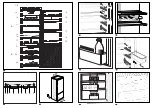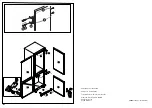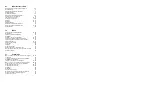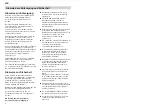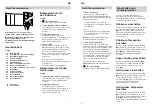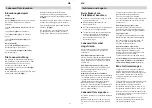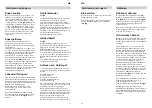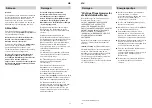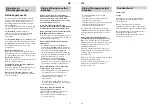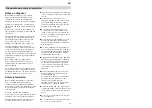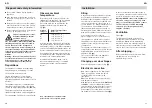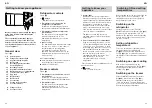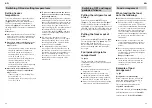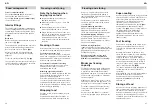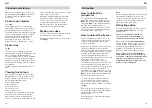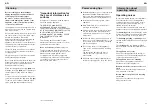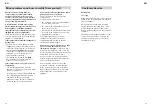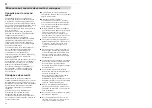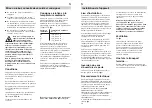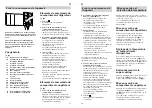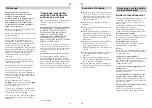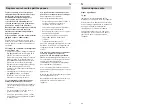
19
en
Disposal and safety information
Notes on disposal
Old appliances still have some residual
value. An environment-friendly method
of disposal will ensure that valuable raw
materials can be recovered and used again.
Unplug your old appliance, cut through the
mains cable and throw away cable and plug
together.
Remove the door lock so that children at
play cannot become trapped inside and risk
suffocation.
The refrigerant used in fridge/freezers and
the gases in the insulation material require
special disposal procedures. Ensure that
none of the pipes on the back of the
appliance are damaged prior to disposal.
Your new appliance was protected by
adequate packaging while it was on its way
to you. All materials used for this purpose
are environment-friendly and suitable for
recycling. Please contribute to protecting the
environment by disposing of the packaging
appropriately.
Do not allow children to play with any
parts of the packaging. There is a risk of
suffocation by the cardboard boxes and
plastic wrapping.
Up-to-date information concerning options
for disposing of your old appliance and the
packaging from the new one can be obtained
from your retailer or local council office.
Safety information
Before starting the appliance for the first
time, you should read the information
contained in the operating and installation
instructions carefully. This information is vital
for the installation, operation and servicing
of the appliance.
Keep the operating and installation
instructions in a safe place and remember to
hand them over to any subsequent owner.
The manufacturer shall not be liable if the
following instructions are not observed:
l
Never start up an appliance showing any
signs of damage. If in doubt, consult your
dealer.
l
Installation and connection of the
appliance must be carried out according
to the installation instructions. Supply
conditions and data must coincide with
the data on the rating plate.
l
Do not under any circumstances use
a steam cleaner on this appliance. The
steam could come into contact with live
parts of the appliance and cause a short-
circuit or electric shock.
l
Electrical safety of the appliance is only
guaranteed if the household earthing
system has been installed in compliance
with regulations.
l
Disconnect appliance from the mains in
case of malfunction and when cleaning or
servicing the appliance. Either withdraw
the plug or turn off at the fuse. Pull the
plug itself and not the cable.
l
Repairs and maintenance of the appliance
should only be performed by a qualified
technician. Incorrect repairs carried out
by someone unqualified are a potential
source of danger that may have critical
consequences for the user of the
appliance.
l
Bottles containing high-proof alcoholic
drinks should be properly sealed and
stored standing up.
Products that make use of a flammable
propellant gas (e.g. whipped cream
sprays, aerosols) and explosive
substances should not be stored inside
this appliance – explosion hazard!
l
Liquids in bottles and cans, in particular
carbonated drinks, should never be stored
in the freezer as the bottles and cans will
burst.
l
Do not cover or block the vents or grilles
of your appliance.
l
Do not use the base panel, pull-out parts,
doors etc. to stand or lean on.


